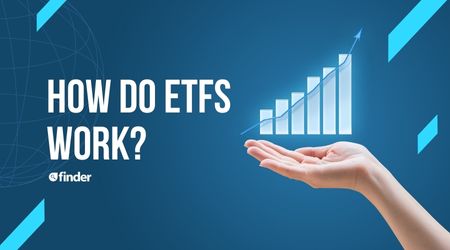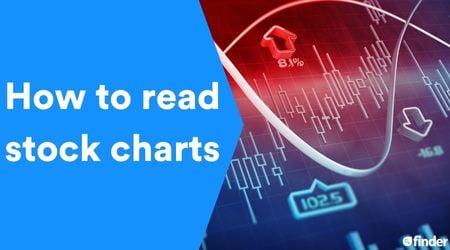
How do ETFs work?
Your guide to how ETFs work and whether this type of investment is right for you.
Read more…JD Technology (formerly JD Digits) will no longer be having an IPO on the Shanghai Stock Exchange STAR Market. Even though you won’t be able to buy stock in JD Technology directly, there are still ways to back the company.
On June 28, 2020, JD Technology (then JD Digits) filed with the China Security Regulatory Commission to go public on the Shanghai Stock Exchange STAR Market. It had hoped to raise $3.1 billion from the IPO.
But on March 30, 2021, JD Technology submitted a request to the Shanghai Stock Exchange to withdraw its IPO. The cancellation was publicly announced a few days later on April 2. Although JD Technology has not officially stated its reasoning, it’s speculated that the withdrawal occurred because of internal business and management changes.
On March 31, the day after submitting its IPO cancellation request, JD Technology entered into an agreement with its parent company, JD.com, to buy fellow subsidiary, JD Cloud & AI. The transaction increased JD Technology’s assets by USD $2.4 billion.
Increased regulatory scrutiny from the Chinese government has made it challenging for fintech companies like JD Technology and its rival, Ant Group (founded by billionaire Jack Ma), to go public. JD Technology has not ruled out the possibility of having an IPO in the future, although it also hasn’t announced any official plans yet. We’ll update this page as more information becomes available.
Although you won’t be able to buy stock in JD Technology directly, there are 2 ways investors can back the company.
Although it’s a less direct investment than purchasing JD Technology stocks outright, one option is for investors to buy stock in its parent company, JD.com, Inc. The company trades on the Nasdaq Global Select Market under the ticker symbol “JD.”
You’ll need a brokerage account to invest in Western Alliance Group. Here’s how it works:
You can also indirectly buy into JD Technology by investing in exchange-traded funds (ETFs) that track JD.com. By purchasing these ETFs, you can potentially earn gains when JD.com subsidiaries like JD Technology are performing well.
The following ETFs hold investments in JD.com:
Agreements between Canada and the US require Canadians holding US stock investments to pay the US Internal Revenue Service (IRS) a 15% withholding tax on any dividends earned on their US stocks. Interest earned from bonds or other interest-yielding US investments are similarly taxed at a rate of 10%.
An exception is made for stock investments held in trust exclusively designed to provide retirement income. Such trusts include RRIFs, LIRAs, LIFs, LRIFs and Prescribed RRIFs. RRSPs are also exempt from US withholding tax if you own US investments in the form of US stocks, bonds or ETFs.
Investment accounts that do not qualify for this exemption include RESPs, TFSAs and RDSPs.
All income from investments, including foreign investments, must be declared as part of your income on your Canadian tax return. Unless your US earnings are exempt from withholding tax, this means you’ll be double taxed on those earnings — first by the IRS, then by the CRA. However, the CRA may allow you to claim foreign tax credits for any taxes you’ve already paid to the IRS.
Speak with a tax professional to find out what rules and exceptions apply to your circumstances.
You can compare features of stock trading platforms in the table below. Once you’ve decided on the right fit for your needs, click the “Go to site” button to get started.
To make comparing even easier we came up with the Finder Score. Trading costs, account fees and features across 10+ stock trading platforms and apps are all weighted and scaled to produce a score out of 10. The higher the score the better the platform - simple.
Online stock trading
Your guide to how ETFs work and whether this type of investment is right for you.
Read more…
Learning how to read stock charts and recognize chart patterns can unlock your success as a trader.
Read more…
Owning a stock means you own part of a company and can potentially grow your wealth. But there is a risk of loss.
Read more…Steps to owning and managing Raytheon Technologies Corp, with 24-hour and historical pricing before you buy.
Steps to owning and managing Gildan Activewear Inc., with 24-hour and historical pricing before you buy.
These are the best renewable energy stocks to buy now in Canada.
Finder’s unique algorithm found the 20 best TSX stocks to buy right now.
Everything we know about the IL Makiage IPO plus information on how to buy in.
Everything we know about the ByteDance IPO plus information on how to buy in.
Everything we know about the Auvik Networks IPO plus information on how to buy in.
Everything we know about the goPuff IPO plus information on how to buy in.
If you live in Canada, you need a broker that provides access to foreign investments to buy Universal Music Group stock.
Find out how to invest in the S&P 500 in Canada—one of the world’s most popular stock indices—to diversify your portfolio.